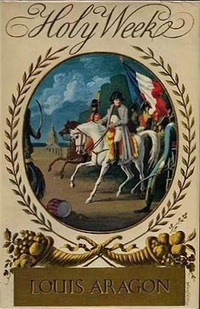#LaSemaineSainte
La Semaine Sainte
La Semaine Sainte is an historical novel by French writer Louis Aragon published in 1958. It sold over 100,000 copies.An English translation by Haakon Chevalier was published in 1961 under the title Holy Week by Hamish Hamilton, London, to mixed
Read More..
Ratings
Likes
Reviews
Popularity
Ranks
This #hashtag is not ranked yet.




